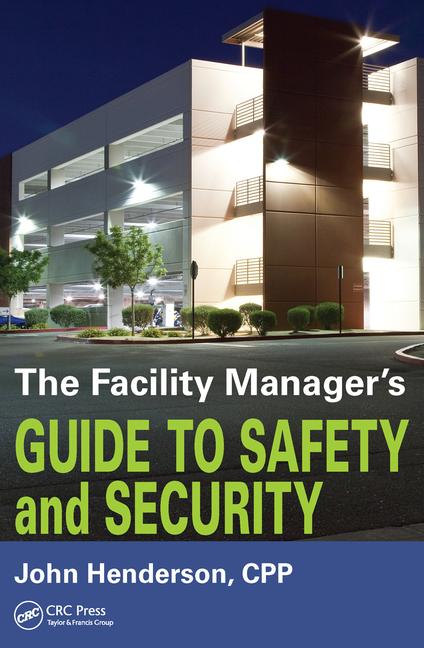Best Practices to Manage Access for Temporary and Contract Workers

Against all odds, a pair of White House party crashers in November 2009 made their way effortlessly into a state dinner hosted by the President. By all accounts, this breach in security came down to negligence on the part of the Secret Service, the Social Office and security guards. When questioned by reporters, Valerie Jarrett, senior adviser and assistant to the President on Intergovernmental Affairs and Public Engagement, said the event “exposed significant security gaps” and that “the security system should have been more diligent.” But, just two weeks later, a couple expecting to take a White House tour was mistakenly ushered into a Veterans breakfast with the Obama’s. Questions arose following the event as to whether security personnel did their job screening the couple before granting them access.
Security Policies that Work
No matter how many outside employees a company hires, security managers agree that access control is vital. For some, restricting access has always been part of their corporate culture. For others, current world events dictate tighter restrictions. Here, three companies share their security policies for managing how much access is given to temporary and contract personnel.
1. Establish a dedicated vetting process for outside employees. According to a 2009 report from Forrester Research, Identity And Access Management Mitigates Risks During Economic Uncertainty–Using Identity And Access Management To Protect Your Business, many enterprises do not have dedicated controls in place for temporary workers because of the misguided belief that short-term workers “don’t have enough time” to be dangerous.
At Ace Hardware, all
employees are vetted and their backgrounds screened before they even enter the
front door, explains Newcomer. “We perform the same level of screening for
full-time employers that we do for contractors. It doesn’t make sense not to
take that pre-emptive step.”
Eric D. Zuck, chief of security for
Convention
Center in ,
says he wishes he and his team had more control over the vetting process. “We
have had felons sent to us who were wanted by the police.”
2. Educate outside help about the
corporate security culture. The IDC report points out that security
training for contractors is often limited, and company security policy is not
always clearly communicated to temporary workers. At Freeman, a Dallas/Fort
Worth provider of services for exhibits and meetings, all employees – full time
and contractors – must participate in a security training program, which
outlines the company’s policies for physical access management, explains Sileo.
This is an essential to Freeman because it hires outside personnel to work on
site at its warehouse facility as well as off site at various convention
centers. “Anyone working for Freeman clearly understands our security culture
once they go through the training program.”
3. Clearly define access points.
Temporary employees should only have access to those systems that are required to
perform their job function. Supplying blanket access based on full time
employees’ roles can introduce unnecessary risk, states the Forrester report.
On the first day of work, Newcomer and his team help all
employees understand the Ace corporate security culture by defining access
policies and how much access is required to perform various jobs. “At Ace, no
one has access to everything,” says Newcomer. He explains that a temporary or
contract worker and a full-time employee performing the same job function will
enjoy the same access privileges. “If the job doesn’t require 24-hour access to
the building for their specific job function, then don’t give it to them.”
And, the security
pros note that procedures should be in place to turn on and turn off access as
efficiently as possible. As contract employee turnover rates tend to be higher
than that of full-time employees, temporary workers need to be provisioned and
deprovisioned quickly. This ensures that no gap exists between the official
departure date and the time when access is shut off, according to the Forrester
report.
4. Deploy a combination of
preventive controls. Identity and Access Management (IAM) solutions
help monitor and enforce security policies and verify that a worker’s activity
aligns with their job function.
Contract workers at Sands wear picture identification badges
identifying them as temporary workers, and temp employees must wear a sticker
that visibly identifies them. Old-fashioned keys and card keys, and security
cameras are also deployed. “I would like us to use biometric assess and
wireless cameras that would cover more areas in the conference center,” says
Zuck. Currently, cameras are in certain areas of the convention center, but not
specifically on the show room floor, which Zuck says leaves the space
vulnerable to theft by the temporary workers. To offset that threat, those
employees are overseen by supervisors who follow the workers as they perform
their duties.
At Ace, outside
workers are expected to wear an ID badge and keep it exposed at all times.
Additionally, a card access system is deployed that monitors employee access.
Newcomer said he receives exception reports from the system that let him know
if someone tried to access an area that did not have authority to do so.
“Often, the person was just trying to find a short cut or got lost, but we have
to follow up on all incidences.”
In addition to color-coded identification badges, Freeman has
designated entry and exit doors as a means for controlling access on site.
“This gives us a better idea of who is clocking in and who has left,” says Mike
Feliciano, regional director of risk management for the company. “Once someone
goes through an exit door, they cannot get back in to the building.” The
company is also researching how closed-circuit cameras and biometrics can be
used for improved access control.
5. Establish a
relationship with the temp agency.
Security pros agree that one of the best ways to be confident in who is walking
through their doors is by creating and maintaining a long-term partnership with
the temp agency. By doing this, the agency gets to know your company, its
requirements, its culture and the type of person that would best fit in at the
organization.
Sands has taken this
approach with its agency. Zuck explains that the agency will often send
employees who have been at Sands before, which not only helps reduce training
time upon arrival but lightens the stress level a bit for the security team
that the person has been on the premises before and has not been any trouble.
For Ace Hardware,
which hires outside help to perform specific projects, it is important that the
agency sends over a committed worker. “We don’t want a revolving door,” says
Newcomer. “We want the same person we get at the outset to be the same person
throughout the process. We can help assure this by maintaining a relationship
with our provider.”
Badging Security – Four Levels to Secure Your Facility
There are a number of badging solutions that provide varying levels of security depending on the size of the location, frequency and number of visitors, and/or temporary workers. To help identify the solution most appropriate for a specific application/venue, here are four levels of badging security.
Level One – Paper Label Badges
This system employs standard paper badges (basically labels) and delivers a minimum level of security. Badges can be issued either manually or electronically and can usually be customized with color and graphics depending on your print output capabilities. Paper label badges are generally intended for one-time use only and often used simply as name tags.
Level Two – Paper Label Badges with Color Photos
Badges with photo identification scanned from driver’s licenses
or captured via an on-site camera system offer a medium level of security. To
further help identify visitors and temporary workers, these badges may also
contain additional use of color, symbols and words.
Level Three – Electronic Badges
Included in this category are proximity, magnetic strip and bar code badges, as well as those containing biometric information. These semi-intelligent badges can be programmed for pre-determined levels of access and can be integrated with access control and video surveillance systems to electronically monitor activity. They offer a high level of security and system integration but do not offer any form of visual status indication.
Level Four – Time Expiring Badges
This technology delivers instant verification of security status plus all of the above solutions and benefits. Time expiring badges and indicators can be added to existing smart cards to provide instant visual verification of visitor status. Time expiring badges prohibit the unauthorized transfer and/or re-use of the expiring badge providing an elevated level of security. They are also extremely efficient with respect to both cost and manpower since they reduce the use of expendables and eliminate redundant registrations for recurring visitors.
Information provided by Brady Identification Solutions
Looking for a reprint of this article?
From high-res PDFs to custom plaques, order your copy today!



